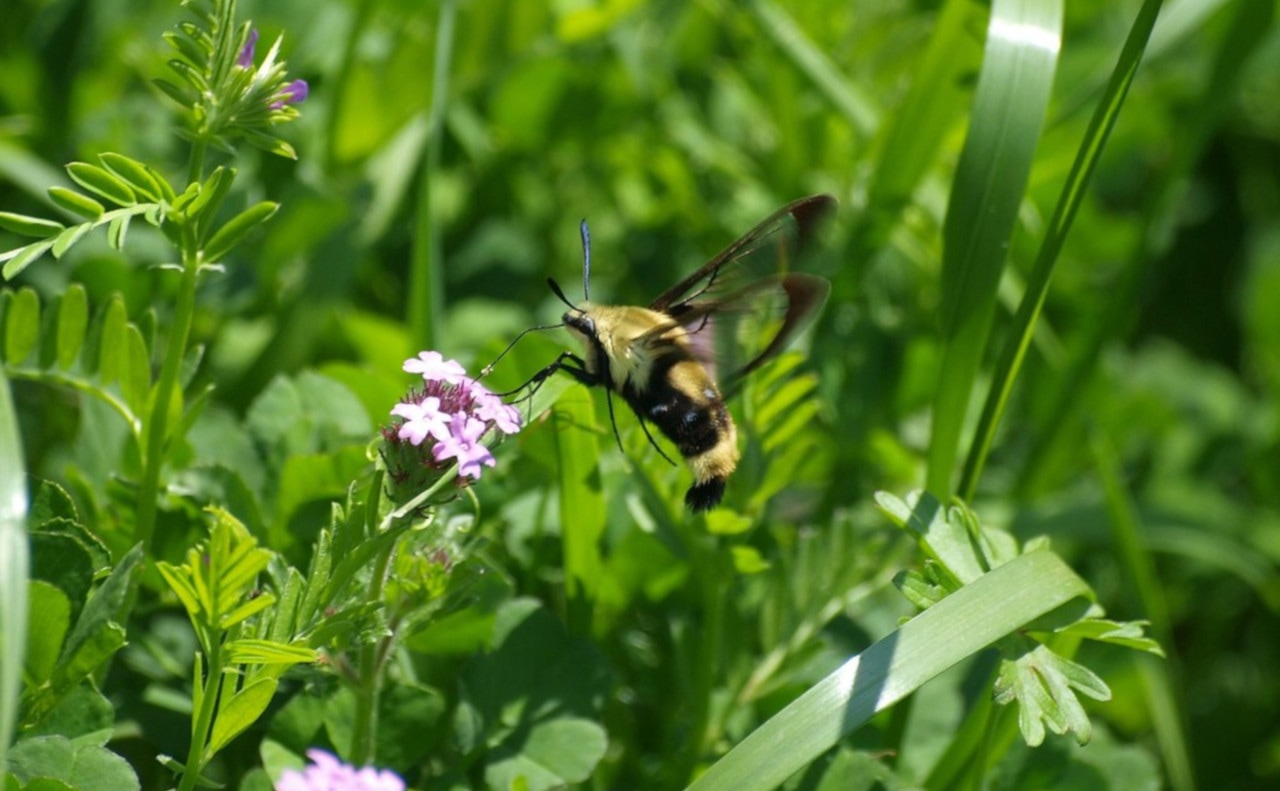Pollinators in the Park
[[translate(episode,'title')]]
[[translate(episode,'audioCredit') || translate(episode,'credit')]][[translate(episode,'title')]]
[[translate(episode,'audioCredit') || translate(episode,'credit')]]Audio Transcript
You are standing in front of a small triangular garden. In the summer it has sunflowers that intermingle with colorful wildflowers. To your left are pine trees and to the right is the Ellipse.
Pollinators in the Park: From early spring to late fall, the Park is filled with flowers that attract a variety of pollinators. There are seven types of pollinators in North Carolina: butterflies, bees, moths, beetles, flies, wasps, and hummingbirds.
A variegated fritillary is a butterfly with brown, orange, and yellow-colored wings. The wings are covered in black and brown veins and markings that start from the body and go outward. This butterfly has a wingspan up to three inches. The underside of its wings include various shades of brown with pale colored veins that resemble a dried leaf. Black spots are visible on both sides of the wings. Its body is brownish-black and fuzzy.
The snowberry clearwing is also referred to as a bumblebee moth. It has a yellow and black, hairy midsection that looks like a bee’s body. Its wings are clear, with reddish-brown borders. Its wingspan is up to two inches.
If you would like, reach out and touch the right half of the sign. You can feel the shapes and patterns of the pollinators I just described. The top image is of a fritillary butterfly with wings spread open. It is perched on blooming yellow flowers. Underneath that is a picture of a snowberry clearwing in flight, drinking nectar from a purple flower, composed of many cone-like buds.
To continue, take the upper path on the right that curves around the Ellipse. The next sign is located 250 feet on the left. Be aware of some tables and chairs that might be in your way as you walk.
Snowberry clearwing photo by Cheryl Nelson
